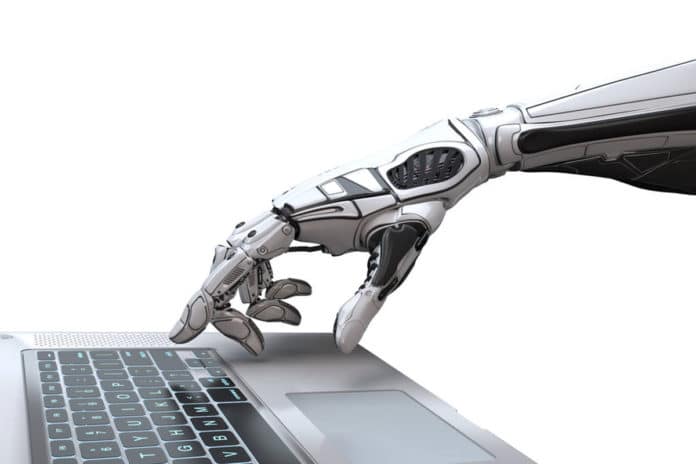Prosthetic devices play a major role in post-amputation recovery. These can serve as cosmetic rehabilitation that can provide a psychological advantage. More advanced prosthetics provide some functional rehabilitation, allowing for daily living tasks such as grooming and dressing, and reducing liability and overuse damage on the contralateral hand. Engineers at John Hopkins University designed a robotic arm using Brain-Computer Interface (BCI) that is operated with the mind of a person just like a normal arm, to bring the person with physical disability back to the same ease, comfort and capacity as a natural limb.
The brain-computer interface, also known as a brain-machine interface (BCI), is a system that allows a person to control a computer using their thoughts. The thought induces electrical activity in the nerve cells and also brain waves. To pick up electrical activity, a chip may be inserted in the brain, or electrodes may be mounted on the scalp to pick up brainwaves. Current technology-enabled people with long-standing paralysis to communicate by typing at effective levels. However, engineers are working on BCI that will pick up the electrical signals associated with the thoughts and control the movement of muscles, limbs, and prosthetics.
As an assistive technology, it is a functional model of disability. The arm is adjustable, meaning it can be built to accommodate people with different needs— from a hand amputee to someone who is missing a whole arm. It may also be used as a robotic arm for quadriplegics or stroke survivors who have lost the ability to lift all or part of their bodies.

Until now, effective BCIs have used invasive brain implants to power robotic arms. Such implants require a tremendous amount of medical and surgical experience to construct and function properly, not to mention the costs and the potential risks. The major challenge in BCI research is to create a less invasive or even completely non-invasive technology that allows people with paralysis to use their thoughts to control their environment or the robotic limb.
Being able to control robotic systems in a non-invasive way will have a much wider use and will benefit people who are paralyzed or have movement disorders by eliminating the need for surgeries and risk of infection and complications.
A recent prototype Mind-Controlled Robotic Arm built by the researchers at Carnegie Mellon University in collaboration with the University of Minnesota is the latest example of the advancement of brain-computer interface technology (BCI) with the ultimate goal of improving the quality of life of people who are unable to use their own arms. The improved concept is more inclusive and is still in the prototype phase.
To date, the technology has been tested for continuous pursuit in approximately 68 people with disabilities (up to 10 sessions per person), including virtual interface control and control of a robotic arm. This new technology can use innovative sensing and machine learning methods to quantify brain signals with electrodes mounted on the outside of the head to perceive somebody’s expected movement. The brain-computer interface (BCI) hits signals that are deep inside the brains of participants wearing EEG-based neural head caps. The sensors fitted, test the brain signals and the movement they are attempting to control.
Experts hope that the results will lead the way to a future where the human brain and technology work together to provide functionality and significantly improve the life for people with movement disabilities making them independent and confident.
References:
- “First-ever successful mind-controlled robotic arm without brain implants”, June 20, 2019. https://neurosciencenews.com/bci-prosthetic-arm-14283/?utm_content=buffera2686
- “Mind-Controlled Robotic Arm”, December 18, 2014. https://magazine.scienceconnected.org/2014/12/mind-controlled-robotic-arm/
- “Robotic Prosthetics for Amputees”, October 09, 2014. https://magazine.scienceconnected.org/2014/10/robotic-prosthetics-amputees/
- “Florida Man Becomes First Person to Live With Advanced Mind-Controlled Robotic Arm”, February 03, 2018. https://futurism.com/mind-controlled-robotic-arm-johnny-matheny
- “First-Ever Non-invasive Brain-Computer Interface Developed”, June 21, 2019. https://www.technologynetworks.com/informatics/news/first-ever-non-invasive-brain-computer-interface-developed-320941
- “Prosthetic Limbs, Controlled by Thought”, May 20, 2015. https://www.nytimes.com/2015/05/21/technology/a-bionic-approach-to-prosthetics-controlled-by-thought.html
- https://neurosciencenews.com/bci-prosthetic-arm-14283/?utm_content=buffera2686
